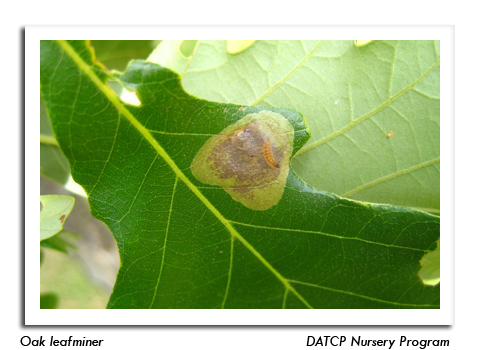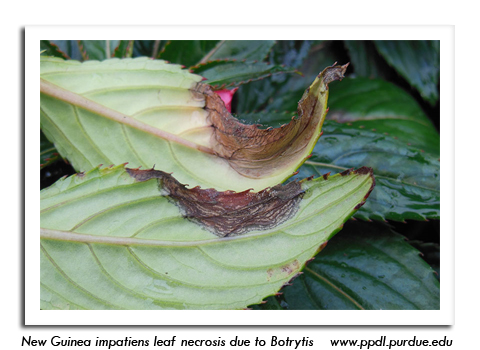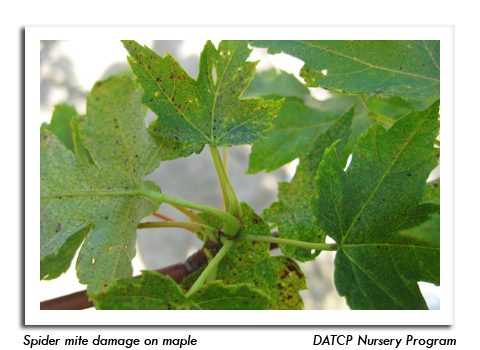
 |
|
|
Nursery & Forest
Volume 61 Number 4 Date 05/19/2016 OAK LEAFMINER - Damage caused by this foliar pest was observed on northern red oaks at a garden center in Clark County last week. The larvae of this tiny moth feed between upper and lower leaf surfaces, just below the upper epidermis of the leaf, forming irregular blotchy mines. Oak leafminers are susceptible to several natural enemies, therefore chemical treatment is not recommended. PEONY RED SPOT - Peonies at nursery stock retailers in Richland County were infected with this fungal disease, characterized by small, circular, reddish or purplish leaf spots that appear on the upper surfaces of young leaves shortly before bloom. Later in the season the lesions expand and merge to form large, irregular blighted areas. All above-ground parts of the peony are susceptible to red spot. This disease is an aesthetic problem that can be controlled by cutting back plants to ground level in fall and destroying infected foliage. Fungicides labeled for peony red spot also provide red spot control and should be applied to the soil around plants in spring when new shoots are 2-4 inches tall. A second post-emergence application may be necessary. BOTRYTIS BLIGHT - This gray mold disease was noted by inspectors on hydrangeas in Clark County. Symptoms of botrytis appear as brown spots on flower petals and irregularly-shaped necrotic areas on the leaves. The leaf spots develop a grayish mass of fungal spores that disperse with splashing water or wind. Botrytis can develop at any stage and may affect any plant part. Reducing humidity levels below 85% and increasing air circulation can help minimize its occurrence. Treatment with an appropriate fungicide or removal from the greenhouse is recommended for symptomatic plants. VIRUSES ON IRIS - Recent nursery inspections in Iron and Washington counties found numerous iris plants infected with potyviruses. Cultural practices such as increasing spacing to reduce contact between plants and controlling the aphid vectors may limit the spread of viruses, but there are currently no controls for virus-infected plants. Once a plant is diagnosed with a virus, DATCP requires it to be removed from sale and destroyed. MITES - Mandevillas at a garden center in Manitowoc County were exhibiting damage attributed to mites. Symptoms of mite infestation vary by mite species and host plant, but usually include stippling, bronzing, mottling and chlorosis of leaves. The species most commonly found in greenhouse settings are the two-spotted spider mite and the cyclamen mite. Successful control of mites requires accurate identification of the species involved. -- Ellen Natzke, DATCP Nursery Inspector GYPSY MOTH - Aerial treatments continued for the second week, with Btk applications completed on blocks in Chippewa, Crawford, Dunn, Eau Claire, Grant, La Crosse, Lafayette, Richland, Rusk and Vernon counties. Extensive frost damage to oaks in the Dunn county treatment sites temporarily slowed spraying operations there, as Gypsy Moth Program specialists determined the best course of action. Treatments are planned for Barron, Green, Lafayette, Rusk and Sawyer counties next week. Gypsy moth larvae were predominantly in the first instar as of May 19. -- Nolan Stracke, DATCP Gypsy Moth Program 



|
|
|